Review for Memories
Introduction
It was a body blow to the anime industry when auteur Satoshi Kon passed away earlier this year. He was a truly visionary director, a creative force that in his tragically short life delivered some of the most memorable animated images committed to film. As you would expect with such a loss, the urge becomes great to fill in the back-story, to ensure that you experience the full filmography to appreciate just what has been lost. I wanted to make sure that I had everything directed by Satoshi Kon, and I went on a trawl through the Internet, looking for obscure titles that I may have missed out on. The thing about genius though is that it very rarely results in quantity, even though the quality may be sublime. I found that I already had Satoshi Kon's filmography as director on my shelves. That's a sign of his importance to anime certainly, if the West has embraced his work to such a degree. Usually in the West, we only get a fraction of the anime that is released in Japan. All that is missing is The Dream Machine, which will hopefully be completed posthumously by Madhouse studios. But I still wanted a piece of Satoshi Kon's work to appreciate, something I hadn't seen before. Of course no one becomes a director overnight, you have to work your way up, and it turns out that Kon has worked on other anime to varying degrees, although only three titles that I learned of have been released in the West. One of them it turns out, I already own. Satoshi Kon was Set Decorator on the Patlabor 2 movie. He also worked as Key Animator on Katsuhiro Otomo's follow up to Akira, Roujin Z. But it's with Katsuhiro Otomo's Memories that it could be argued that Satoshi Kon first made an impact. He wrote the screenplay to one of the segments, reputedly the best part of the anthology, and I have long wanted to experience it.
Memories is an anthology of works based on Katsuhiro Otomo's own manga. Three different directors invest the stories with three very different styles to create something, if you forgive the pun, quite memorable. The anthology was originally released back in 1995, but it took a long time for it to be licensed in the West, and in the end it was only a company with the clout of Columbia/Tristar now Sony that could afford to release it. The three films are as follows, and you can watch them all in one go, or you can select them individually from the menu.
1. Magnetic Rose (42 mins)
Directed by Koji Morimoto, and with a screenplay from Satoshi Kon, Magnetic Rose tells the story of four men working in the harshest of environments, in hardly the most glamorous job possible. Ivanov, Aoshima, Heintz, and Miguel are garbage collectors, in space. They are the crew of the Corona, salvaging that which still has worth, and junking the rest. It's a tiresome job, which is why when their shift is up, they don't leap at the chance for overtime. A distress call is another matter entirely, and when they receive an SOS, they are obliged to respond. But it's a strange SOS, the tones of Madam Butterfly piped over the distress frequency, and originating from a space bound Sargasso Sea, a spaceship graveyard where magnetic anomalies and bizarre occurrences abound. They find that the distress call originates from a gargantuan conglomeration of junk, a cobbled together space station the size of a planetoid. Heintz and Miguel go aboard to track down the mayday, and walk straight into a renaissance opera house.
2. Stink Bomb (39 mins)
Directed by Tensai Okamura, Stink Bomb tells of the misadventure of Nobuo Tanaka, a scientist working for a pharmaceutical company. Nobuo's problem is that he has a cold, an ailment hardly alleviated by a visit to a local doctor. You'd think that working for a pharmaceutical company would allow for some early access to new medicines, and you'd be right. It's also a dumb idea to take an untested drug. But when one of his co-workers mentions to Nobuo that there are bottle of tablets on the boss's desk that work wonders on fevers, Nobuo can't resist temptation. He takes one tablet and then catches forty winks. Of course it wasn't a fever medicine. His company had been secretly working on a military application. When he wakes up, everyone else in the lab is unconscious. He calls Tokyo for help, only to be told to bring the experimental drug and the data with him to Tokyo, and to leave before the police and the ambulances get there. But the police aren't coming. Suddenly, in the middle of winter, all plant life around Nobuo is blooming, while all animal life in his vicinity is falling unconscious. And as he makes his way to Tokyo, the effect only gets stronger.
3. Cannon Fodder (28 mins)
As this is tailed by the film's credits, it actually comes down to a briefer 22 minutes. This is the segment that is directed by Katsuhiro Otomo himself, and it's as far away from traditional anime as you can imagine. Drawn in pencil sketch style, with a very European feel to the fluidity and feel of the animation, this is a satirical look at a world centred on war. It's a day in the life of a family in a city where life revolves around firing its cannons at its enemies. Father goes to work on Cannon 17, mother works in the factory manufacturing shells, and the son goes to school to learn ballistics, dreaming of one day being the one who gets to fire the cannon.
Picture
Memories gets a 1.85:1 anamorphic transfer that is beginning to show its age. That's despite it being in licence limbo for several years, and only coming to the UK in 2008. The actual anthology was released in 1995, and you get the obvious old-fashioned cel animation and the issues that entails. The transfer itself is clear for the most part, a nice Film to PAL transfer on the face of it, but curiously still prone to a little flicker and jerkiness at times. The image is soft and the colours are a little subdued and faded, while black levels ought to be stronger. It is still watchable, but a little disappointing nonetheless.
Sound
You have a choice between DD 5.1 Japanese and German, DD 2.0 Surround Italian and Spanish, and subtitles in English, as well as Arabic, Dutch, German, Hindi, Italian, Portuguese, Spanish and Turkish. All that is missing is an English dub, which given the quality of these segments is a crying shame. The dialogue is clear, and the surround sound does give the animation added impact, especially in the first two segments. Magnetic Rose gets a music soundtrack from Yoko Kanno, and while there is a lot of classical music used, she also adds just the right note of Alien-esque creepiness to the story. Indeed, you might recognise one of the sound effects from Ridley Scott's movie. In contrast, the more humorous Stink Bomb has a very jazz-funky, upbeat soundtrack, while Cannon Fodder is just quirky.
Extras
Memories comes in an Amaray Case inside a card slipcase, which simply mirrors the Amaray sleeve art. On the disc, you'll find trailers for Steamboy, Osamu Tezuka's Metropolis, and Roughnecks: Starship Troopers.
The sole extra feature is the "Memories of Memories" featurette. This lasts 29 minutes, and features behind the scenes looks at the creation of the segments, as well as interviews with directors Katsuhiro Otomo, Koji Morimoto, and Tensai Okamura. Also included in the runtime is the pilot film that trailed the feature to the festival circuit, as well as the trailer.
Conclusion
I am very glad that I read about Memories first, and also that you are able to select the segments individually from the menu. That's why I watched the film in reverse order, leaving the best, Magnetic Rose, for last. As with any anthology, Memories is something of a mixed bag, and I found something ephemeral, something entertaining, and something stunning within. Just as I hoped and indeed expected, it was Magnetic Rose, with its screenplay from Satoshi Kon that totally blew me away, easily the best story of the trio, and well worth the purchase by itself. It's an early example of his penchant for distorted and fluid realities, where perception isn't everything, and in this case where memory is far more powerful and potent a force than anything else.
Koji Morimoto directs a short that owes much to Alien in mood and style, with the crew of the Corona as browbeaten and weary a bunch of blue-collar workers as those aboard the Nostromo. Forty odd minutes isn't a lot of time to establish character and tell a story, but we do get a vision of these four disparate individuals, and the community they have aboard their space-borne garbage truck. The insidious menace isn't a xenomorph though; it's a siren song distress call from the darker reaches of space, a call that draws them directly into a trap. One woman's memories reach beyond time to exact her thoughts of vengeance, long after any meaning behind that revenge has lapsed. Two of the crew sent to investigate the distress call respond in different ways, one is happy to lose himself in someone else's memories, while the other's own tragic memories give him the strength to fight back. Magnetic Rose is a traditional ghost story given a sci-fi cyberpunk twist, one that works on every level.
Stink Bomb goes more for the humour jugular, while its tale of an out of control medical experiment, very much in the Katsuhiro Otomo tradition of mankind plagued by his own tendency to reach beyond his grasp. Akira has psychokinetic research spiralling out of control; Steamboy gives the out of control technology a Steampunk spin, while Roujin Z is a more satirical spin on cyberpunk and geriatrics. Stink Bomb has bio-weapons research wreak havoc when a poorly pharmaceuticals researcher decides that it's worth taking a risk on an experimental drug. Only he picks up the wrong tablet and unleashes havoc. To the researchers' credit, they were trying to create an antidote to a weapon and not a weapon itself, but the results are just as devastating, a smell that leaves all animal life comatose. Of course the researcher doesn't realise this, all he knows was that he was ordered to head to Tokyo with the research and the drug before the authorities could get their hands on it and blow open a scandal. So the hapless scientist becomes the target of a mass military mobilisation, as they fight to protect Tokyo. It's 40 odd minutes of utter silliness, but directed with energy and verve, it proves to be a very entertaining 40 minutes.
Not so for Cannon Fodder, which is the one film in the anthology that Otomo directs himself. It's short and ephemeral at 20 minutes, and indeed perhaps too short at that, as it becomes a slightly unsatisfying slice of life episode, one day in the life of a family at war, living in a city that revolves around war. It's another satire, but one that lacks bite. It's a society geared to war and nothing else, no one is even certain of who they are fighting, let alone why. All they know is that they have to fire shells from giant cannons against this mobile and distant enemy. Being a cog in the machine, and the idea of a meaningless perpetual war, are both tropes that are well worn in fiction, but without a specific target to aim at, the satire just becomes vaporous and generic. Making up for that is the short's distinctive and appealing animation style, as far removed from what we would class as traditional anime as possible, and with the camera always in motion, it certainly is a technically accomplished and quality piece of work.
Memories is a very rewarding film, with three rather different stories, but all appealing in their own way. I wanted to see it for Magnetic Rose alone, which certainly didn't disappoint. But Stink Bomb and Cannon Fodder were also entertaining and thought provoking, if not to the same degree. Definitely make some space for this DVD, especially if you are after something self-contained and even a little experimental, as even after 15 years, Memories holds up very well indeed.
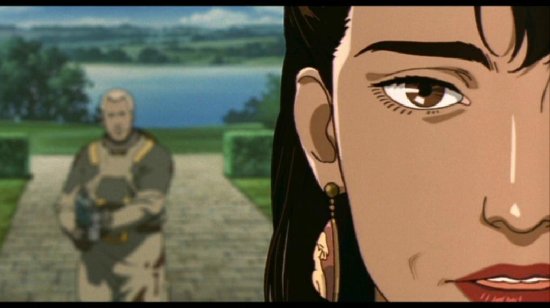
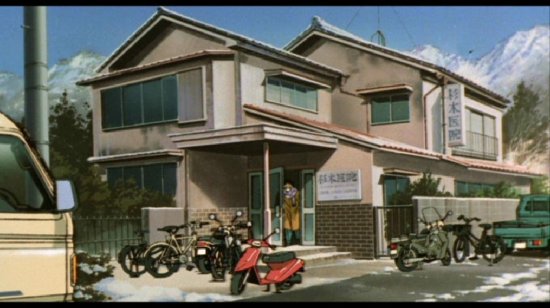
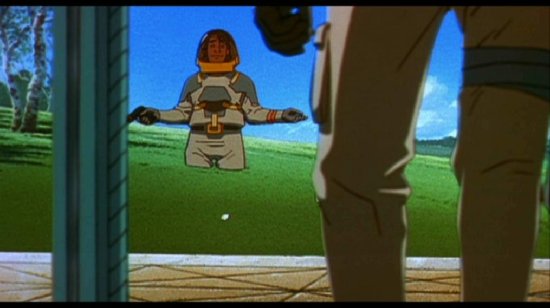
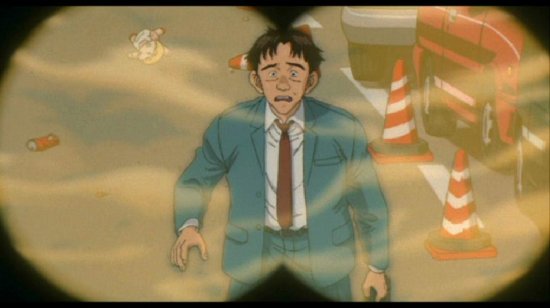
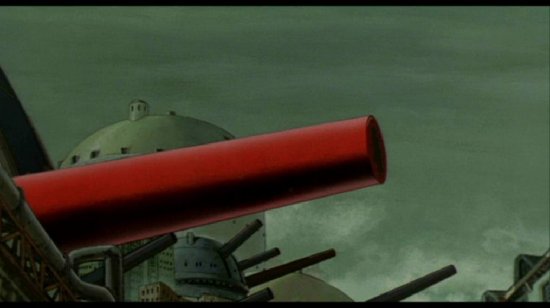
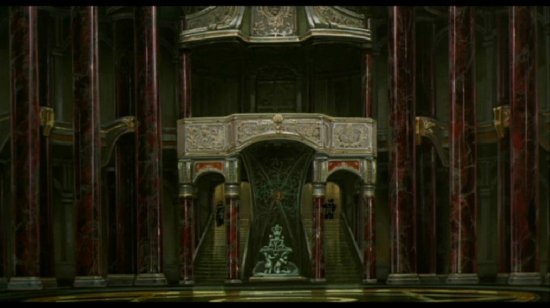
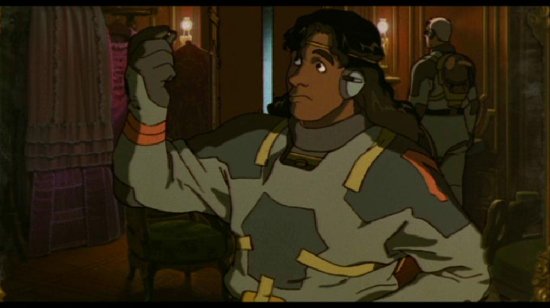
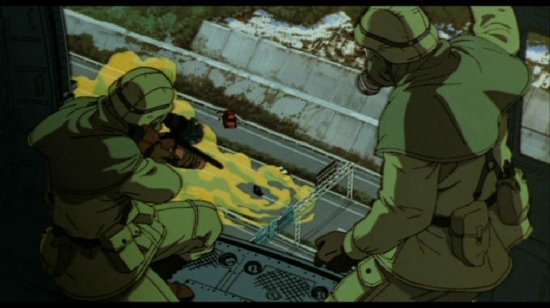
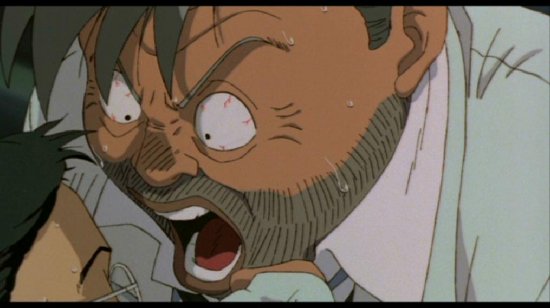
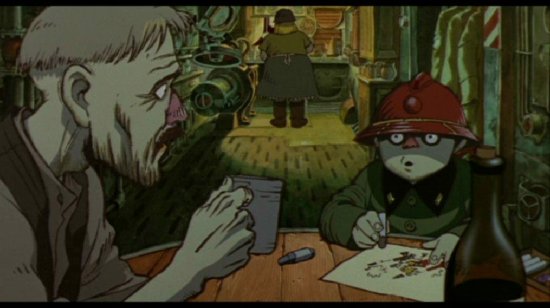
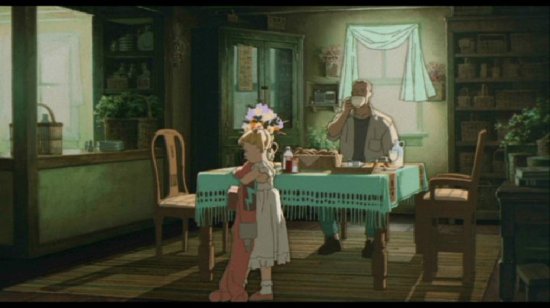
Your Opinions and Comments
Be the first to post a comment!